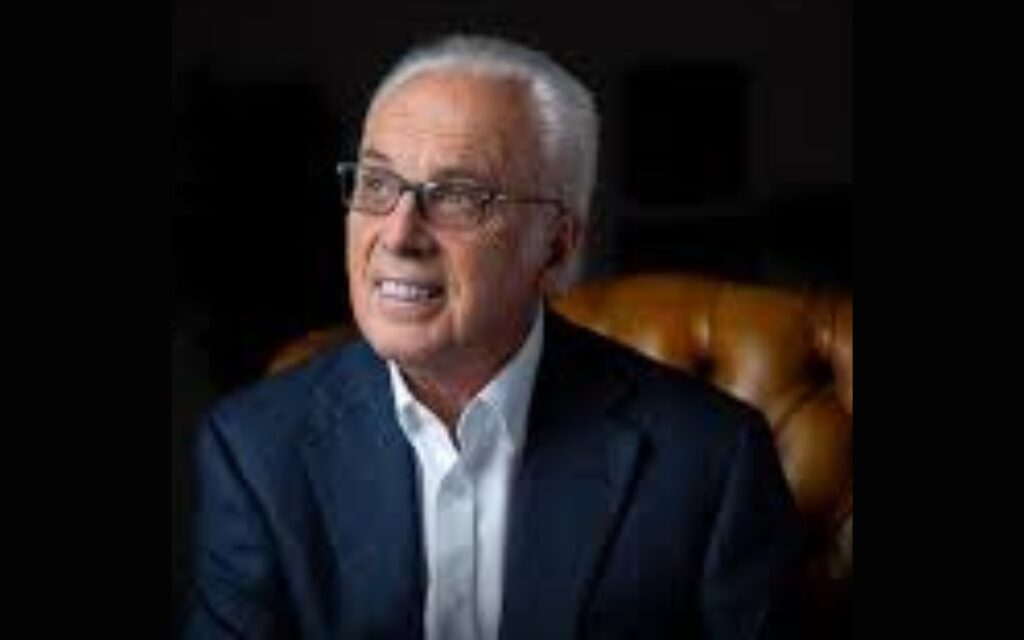This is the second post in a five-part series titled 25 Influential figures in Church History.
Christianity wouldn’t be what it is if not for several men who labored faithfully to lay the foundation and build the pillars o the Church. To remember and appreciate their legacy, I have compiled a list of twenty-five men whose works still influence us today. This list is neither exhaustive nor comprehensive, so I encourage you to check out the sources in the footnotes for more information.
Onward we go with the early Church Fathers!
The Apostolic Fathers (AD 35 – 150)
The apostolic church fathers were Christian leaders who were contemporaries of the apostles and were taught by them.
5. Clement of Rome (AD 35 – 99)
Clement of Rome (not to be confused with Clement of Alexandria) was a bishop of the church in Rome after the death of Peter and Paul. Many scholars even believe he was the Clement Paul mentioned in Philippians 4:3.
Clement is mainly known for a letter he wrote to the church of Corinth around AD 96. He wrote this epistle to address divisions among the Corinthians regarding leadership and called them to humility, repentance, and peace. He said in 1 Clement 49, “love admits no schisms: love gives rise to no seditions: love does all things in harmony.”1 His epistle might be the earliest document written after the New Testament, and it was widely read throughout the ancient Roman Empire for several years.
In AD 101, Emperor Trajan banished Clement from Rome to work in a stone quarry where he was martyred by being thrown into the Black Sea tied to an anchor.
Clement lived by following the example of those who came before him and died for Christ.
6. Ignatius of Antioch (AD 35- 110)
Although Ignatius was one of the most significant figures in the early Church, little is known of his life. We know that he was from the city of Ephesus, a disciple of John, the apostle, and was a bishop in Antioch.
Around AD 110, Emperor Trajan sentenced Ignatius to die in Rome. And on his way there, the soldiers allowed Ignatius to visit several churches and even write them letters. In his letters, he mostly warned believers against false teachings. Specifically, Gnosticism and Docetism— the belief that Jesus didn’t come in the flesh.
Like his teacher John, Ignatius fought for the truth and reminded believers not to heed such lies. He said in one of his letters to “stop your ears when you hear these false teachers” 2.
It was crucial to Ignatius that Jesus came in the flesh because, as a human, Jesus identified with our sufferings. And it was the knowledge of his sympathetic High Priest that made Ignatius persevere and endure his trials. He said, “to share in His (Jesus) passion I go through everything, for He who became the perfect man gives me strength.”
He died holding fast to that truth and to His savior.
7. Polycarp of Smyrna (AD 69 – 155)
Polycarp was the second disciple of John the apostle, and a bishop of the church at Smyrna. He only wrote one letter to the church at Philippi, in which he warned the Philippians against false teachers and encouraged them to persevere through their persecution.
At 86, Polycarp was arrested and sentenced to burn at the stake. When asked to renounce Christ to preserve his life, he said, “Eighty-six years I have served Christ, and He never did me any wrong. How can I blaspheme my King who saved me?”3 This refusal cost him his life.
Tradition says that, when Polycarp was sent to the stake, the fire didn’t burn him. Consequently, he was stabbed to death, and then his blood extinguished the flames.
Polycarp’s martyrdom became one of the most documented death in church history as a letter titled “The Martyrdom of Polycarp” began circulating throughout the early Church. This letter told the story of Polycarp’s death and called it a day of victory.
Through Polycarp’s life and death, we have an example of living for Christ and dying for Him (Philippians 4:21). His followers said, “He was not merely an illustrious teacher, but also a pre-eminent martyr, whose martyrdom all desire to imitate, as having been altogether consistent with the Gospel of Christ.”4
Ante and Post-Nicene Fathers (AD 150 – 500)
The ante-Nicene fathers are the church leaders who came after the apostolic fathers but lived before the Council of Nicene in AD 325. While the post-Nicene church fathers lived after the council.
8. Justin Martyr (AD 100-165)
Justin was born in Flavia Neapolis, Judea. He was a lover of the truth and moved to Ephesus to study the various philosophies of his day. One day, Justin met an older man who shared the gospel with him and challenged his views. That conversation had a profound impact on him, and he became a believer in Christ.
He then moved to Rome, where he taught and held private lectures for people interested in knowing more about Christianity. He also authored many works, the majority of which are lost except for two apologies — which are formal defenses of Christianity, and Dialogue with Trypho; a discussion between Justin and a Jew about the superiority of Christ and Christianity.
In AD 165, Justin and his followers were arrested for their faith. And when Justin was asked to renounce Christ, he said, “No one who is rightly minded turns from true belief to false.” 5 Consequently, he was beheaded and became known as Justin Martyr to honor his death.
9. Saint Irenaeus de Lyons (AD 130-202)
Irenaeus was a Greek bishop in Lugdunum, Gaul— modern-day Lyons, France. He was born in Smyrna, Asia Minor, and was a disciple of Polycarp who was a disciple of John, the apostle. He was a missionary, pastor, apologist and author whose work greatly impacted the church.
In AD 177, under the orders of emperor Marcus Aurelius, the officials of the city of Lyons gathered all the Christians and jailed them. They kept these Christians prisoners and treated them harshly to make them renounce Christ. But the vast majority stood their ground. As a result, they were all martyred.
However, Irenaeus escaped the massacre because he was on a journey to Rome. Upon his return, he took over the role of the bishop of Lyons now vacant. And like his teachers, Ireneaus spent his life fighting against Gnosticism and false teachings.
He wrote many books such as the influential Against Heresies, in which he quoted from all books of the New Testament but 3 John. The circumstances surrounding his death are unknown, but some sources say he also died a martyr. Both the Catholic and Eastern Orthodox Churches canonized him.
10. Athanasius of Alexandria (AD 298-373)
Athanasius was the twentieth bishop of Alexandria, Egypt. He is well known for contending for the faith and fighting heresy in the fourth century.
During his time, a man named Arius started teaching that Jesus was a created being and was not the eternal God. When Athanasius caught wind of this false teaching, latter dubbed as Arianism, he condemned the theology and affirmed the deity of Jesus and his eternal relationship with the Father.
Despite Athanasius’s valiant efforts, Arianism continued to spread in the church and caused division. Consequently, Emperor Constantine sought to end the debate and convened a council of bishops in Nicaea to decide on the matter. Athanasius attended that council and was one of the lead speakers. He became the principal author of the Nicene Creed, which declared the Son to be “begotten, not made, being of one substance with the Father.”6
But even after the Nicene Creed was affirmed by the majority of the Council of Nicea, Arianism continued as more and more bishops accepted it. Not Athanasius. He vigorously affirmed the deity of Christ and relentlessly fought against Arians. His unwavering stance on the truth cost him five exiles from his city and church. It led to an expression Athanasius contra Mundum, or “Athanasius against the world.” 7 He died in 373, eight years before the Council of Constantinople confirmed the Nicene Creed.
Athanasius is also known for his work in discovering the canon of Scripture. He was the first to list all 27 books of the New Testament that we have today.
11. John Chrysostom (AD 347-407)
John Chrysostom, also known as the greatest preacher of the early church, was born in Syrian Antioch and was an archbishop of Constantinople.
In 386, he was ordained as a presbyter and preached in the church of Antioch. But in 398, soldiers seized him and took him against his will to Constantinople, where a government official made him archbishop of the city.
During his ministry in Constantinople, John preached against the immoral practices of the city. But he was met with opposition, and the Empress Eudoxia removed him from office in 403. However, the people of Constantinople rioted in John’s favor, and he was reinstated the following day.
The opposition didn’t discourage john, and he continued to stand on the truth and preach against sin. Consequently, he was banished in 404 for treason. He died during his exile in 407. It is said that his last words were, “Glory be to God for all things.” 8.
John remains one of the greatest preachers in church history. His excellent preaching and public skills earned him the nickname Chrysostom which means golden-mouthed. He made a lot of contributions to the church and there are over 600 of his homilies and sermons still in existence.
He was also recognized as a Doctor of the Church by the Catholic Church and one of the Three Holy Hierarchs by the Orthodox Church.
12. Augustine of Hippo (AD 354- 430)
Saint Augustine was born in Thagaste (modern-day Algeria) during the Roman occupation. He was a philosopher and a theologian whose work deeply impacted the church.
Augustine grew up as a pagan and became a believer in 387 under the influence of his Christian mother. Afterward, he became a priest and a renowned theologian. Throughout his ministry, he made several significant contributions to the church. Some of his most influential writings include Confessions—a personal account of his life, City of God, On the Trinity, and On the Christian Doctrine.
He also introduced the concept of the visible and invisible church, developed the doctrine of a just war, and he made famous the amillenial view in eschatology.
Augustine’s works greatly impacted the Protestant as well as Roman Catholics. It was from his sacramental theology that the Roman Catholic church developed several doctrines such as infant baptism, the perpetual virginity of Mary, and transubstantiation (the real body and blood of Christ during communion).
He died of illness in 430. After his death, he was canonized as a Saint and recognized as a Doctor of the Church.
Grace and peace to you!
Sources










[…] 25. 25 Influential People in Church History: The Church Fathers | Holy Sojourners, https://holysojourners.com/influential-people-in-church-history-the-church-fathers/ 26. http://www.ebsco.com, […]
[…] The early Christian era is characterized by a multitude of influential figures whose legacies continue to shape contemporary discourse. St. Augustine, a paramount figure among the church fathers, significantly contributed to the evolution of Western Christian thought. His life spanned from AD 354 to 430, during which he emerged as a preeminent theologian and priest. His seminal works, including “Confessions” and “The City of God,” have profoundly impacted the church17. […]